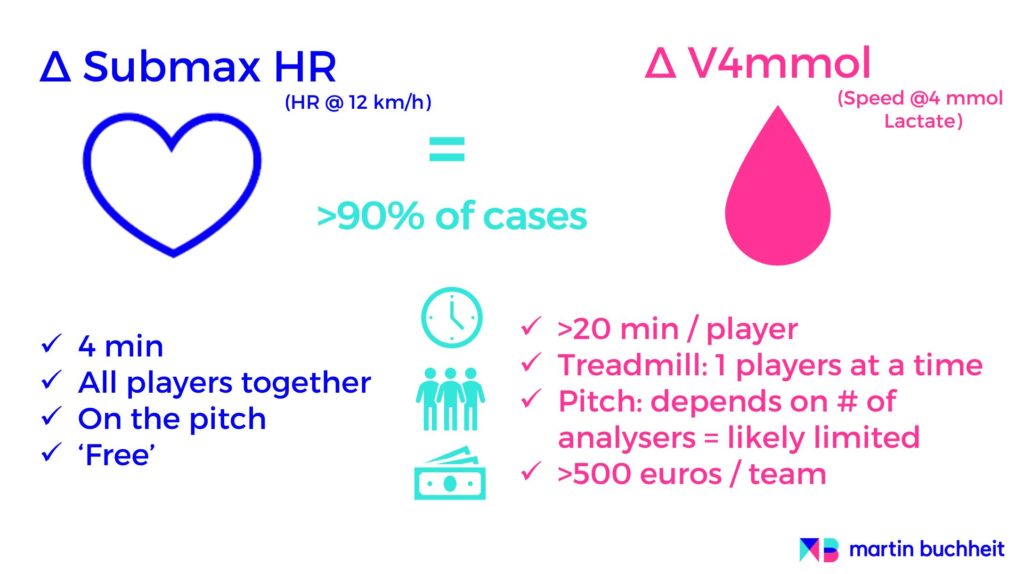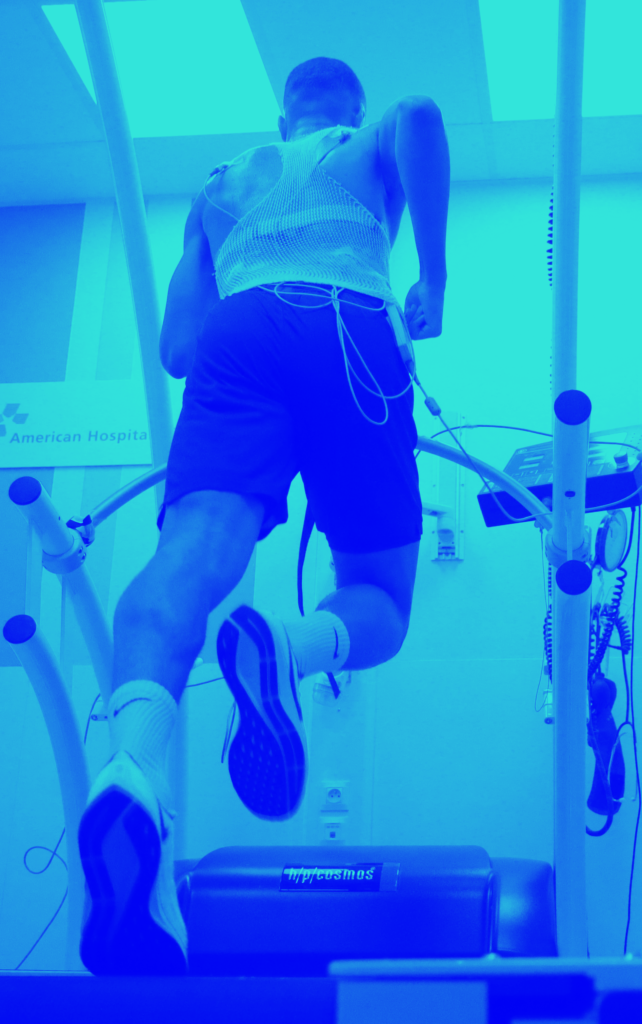Monitoring cardiorespiratory fitness in professional soccer players: Is it worth the prick?
Martin Buchheit, Ben M. Simpson and Mathieu Lacome, Monitoring cardiorespiratory fitness in professional soccer players: Is it worth the prick? IJSPP, In press
Full text here

Abstract
Purpose. The aim of the present study was to compare in soccer players between-test changes in submaximal exercise heart rate (HRex, 3 min, 12 km/h) and the speed associated with 4 mmol/L of blood lactate (V4mmol) to get insight into their level of agreement and respective sensitivity to change in player’s fitness.
Methods. Nineteen elite professional players (23 ± 3 yrs) performed 2-3 graded incremental treadmill tests (3-min stages interspersed with 1 min of passive recovery, starting speed 8km/h, increment 2 km/h until exhaustion or 18 km/h if exhaustion wasn’t reached before) over 1.5 seasons. The correlation between the changes in HRex and V4mmol was examined. Individual changes in the two variables were compared (> 2 x typical error considered as ‘clear’).
Results. The change in HRex and V4mmol were very largely correlated (r = 0.82, 90% confidence interval 0.65-0.91). In >90% of the cases, when a clear individual change in HRex was observed, it was associated with a similarly clear change in V4mmol (the same direction, improvement or impairment of fitness), and conversely.
Conclusion. When it comes to testing players sub-maximally, our results suggest that practitioners can use HRex or V4mmol interchangeably with confidence. However, in comparison with field based standardised warm-up runs (3-4 min, all players together), the value of a multi-stage incremental test with repeated blood lactate samplings is questionable for a monitoring purpose given its time labour, cost and poorer player buy-in.
Keywords: player monitoring; fitness; heart rate; lactate; cost benefit

Figure. Percentage change in HRex at 12 km/h and the speed at V4mmol for the 22 test comparisons. Grey areas represent unclear changes (2 x TE). The red zone represents an impaired fitness, the area in green represents an improved fitness based on both variables. Note that 2 points (<10% of the observations, red circles, player 4 and 14) was suggestive of a clearly improved V4mmol despite unclear change in HRex.




